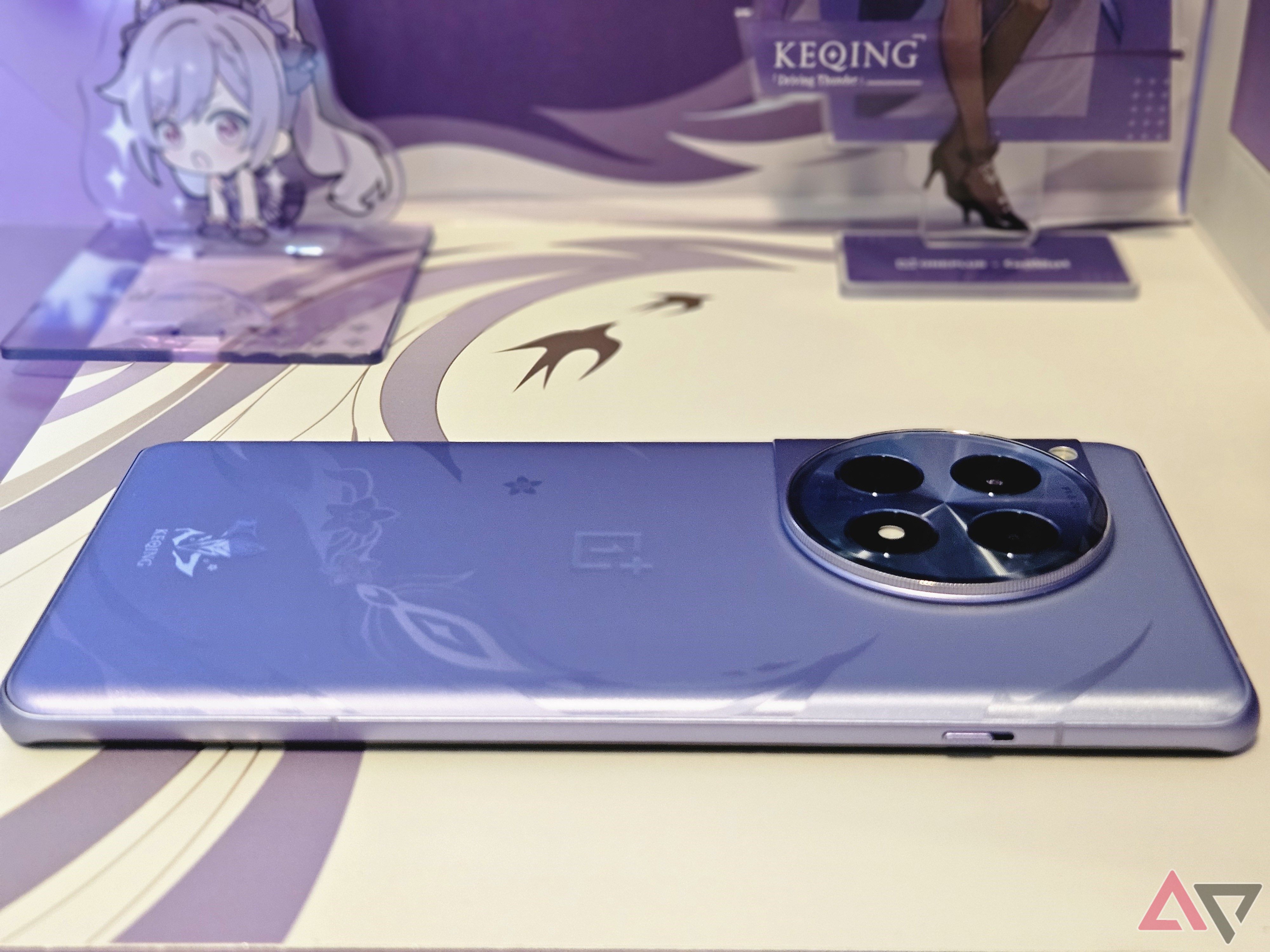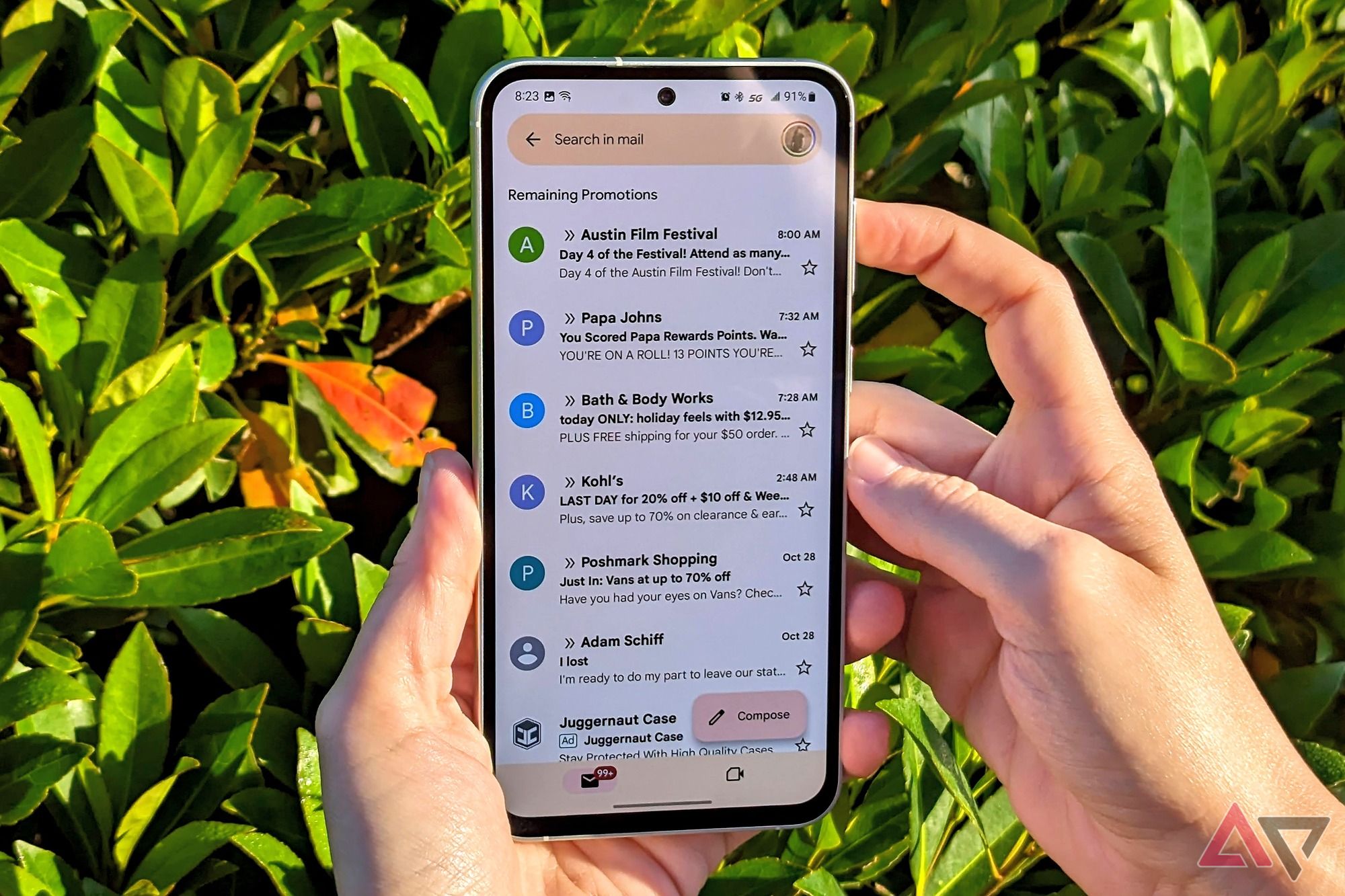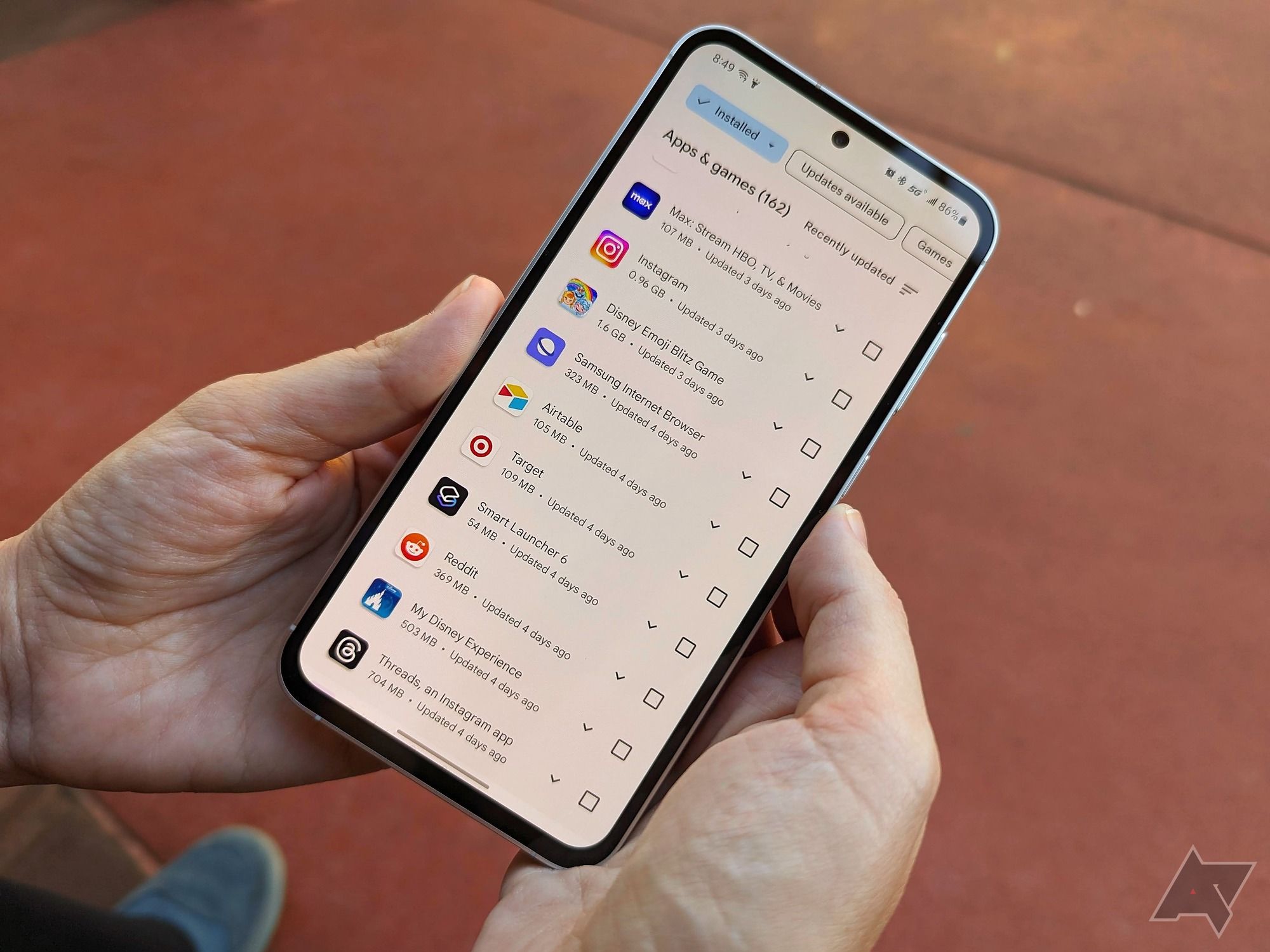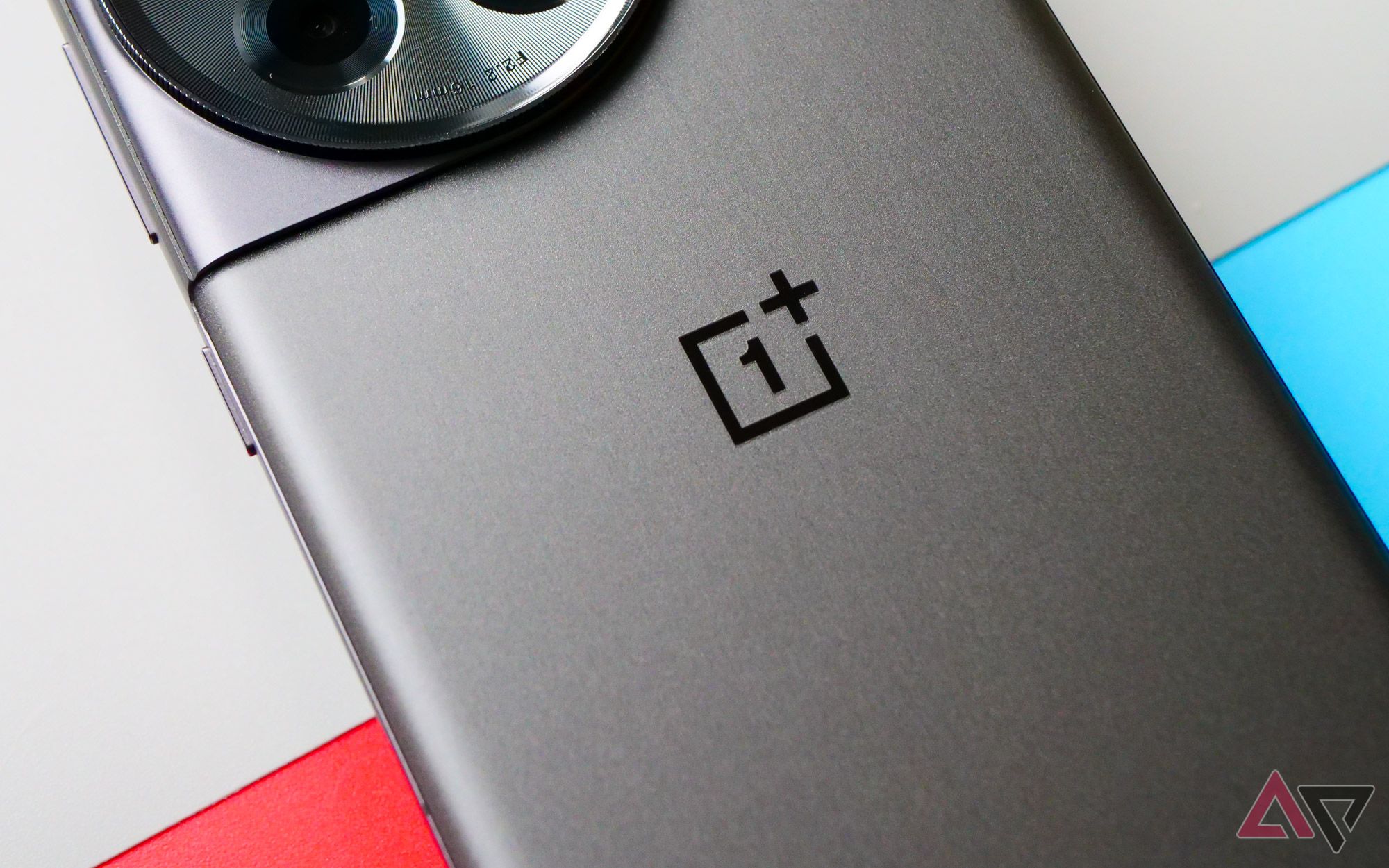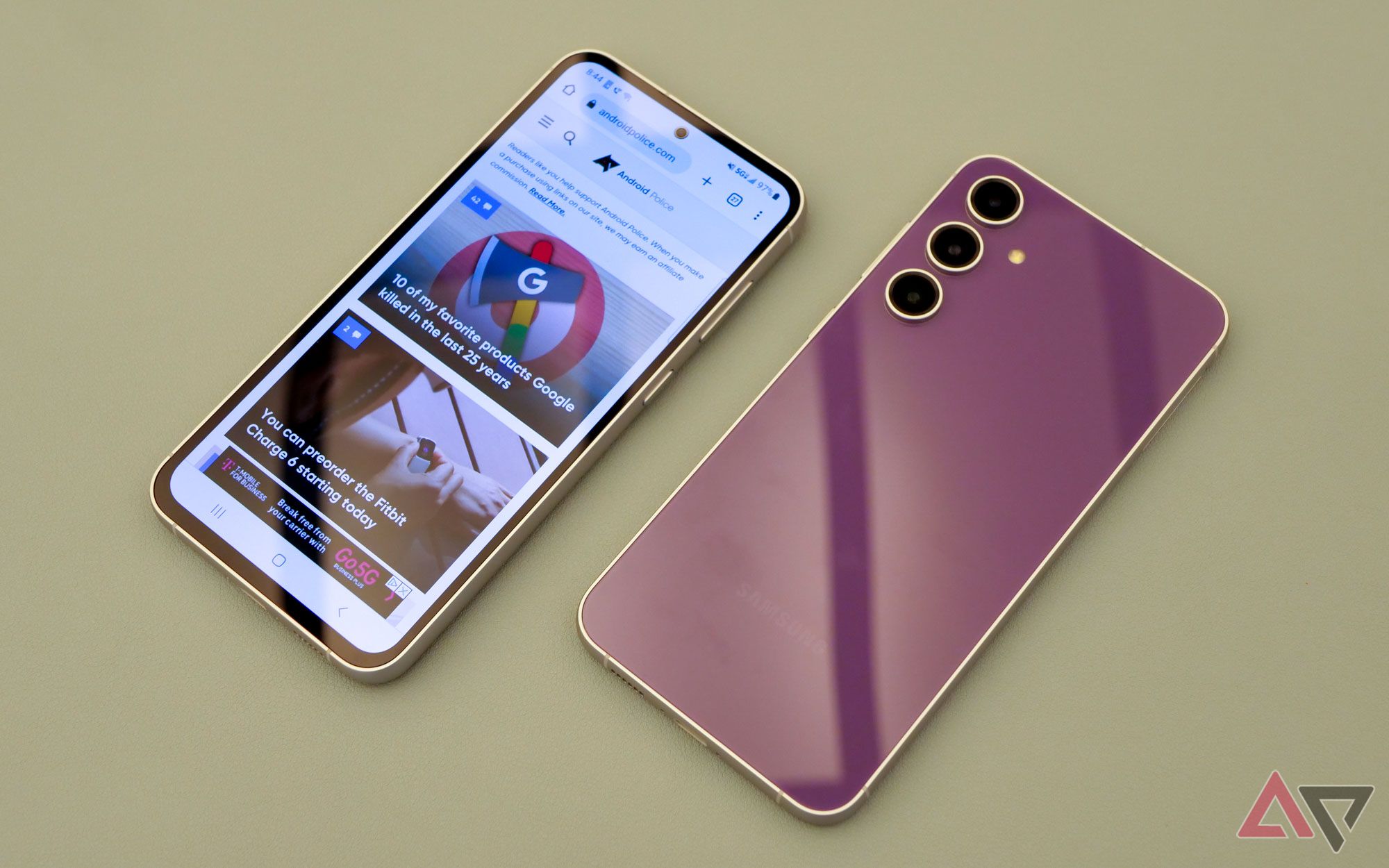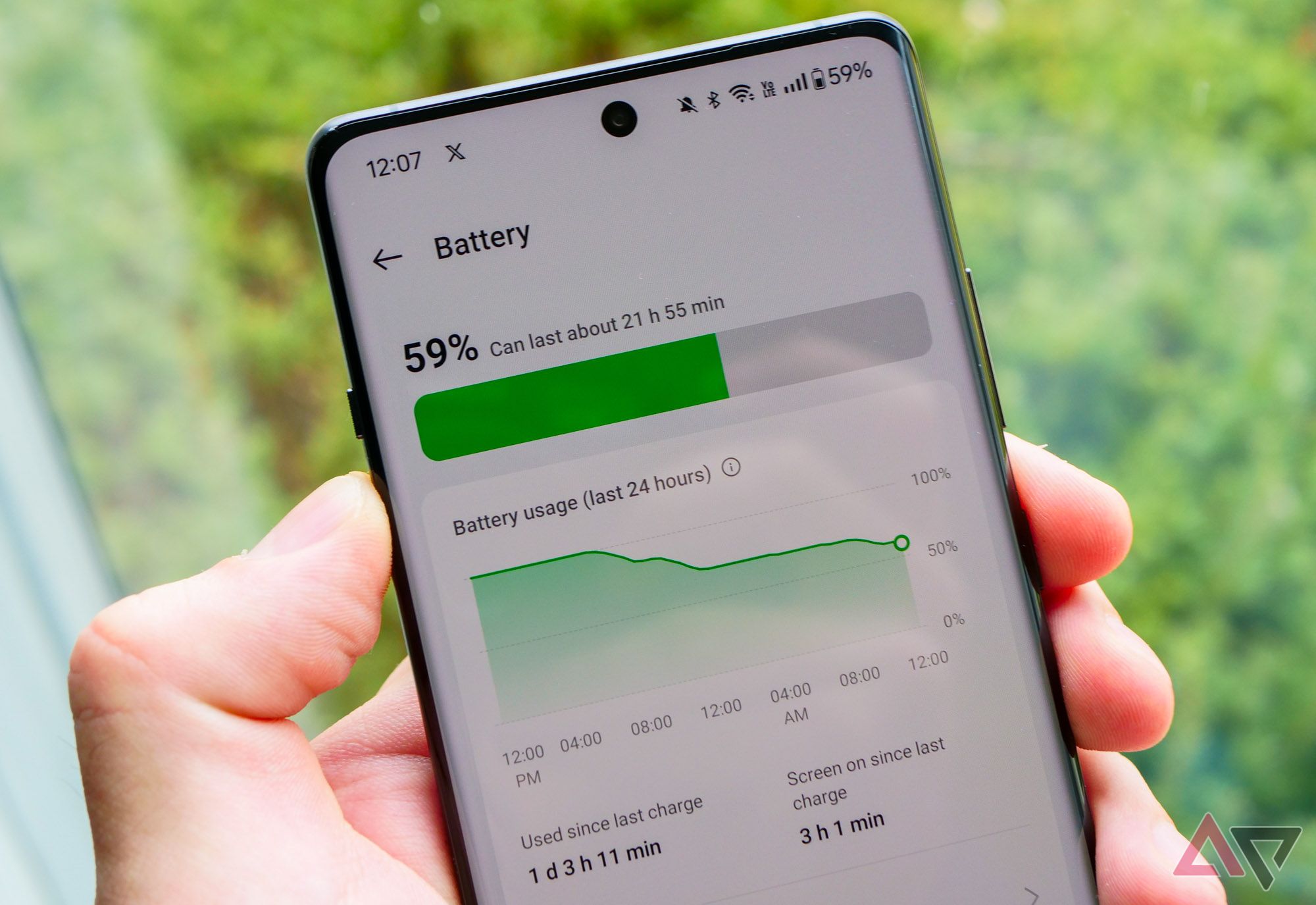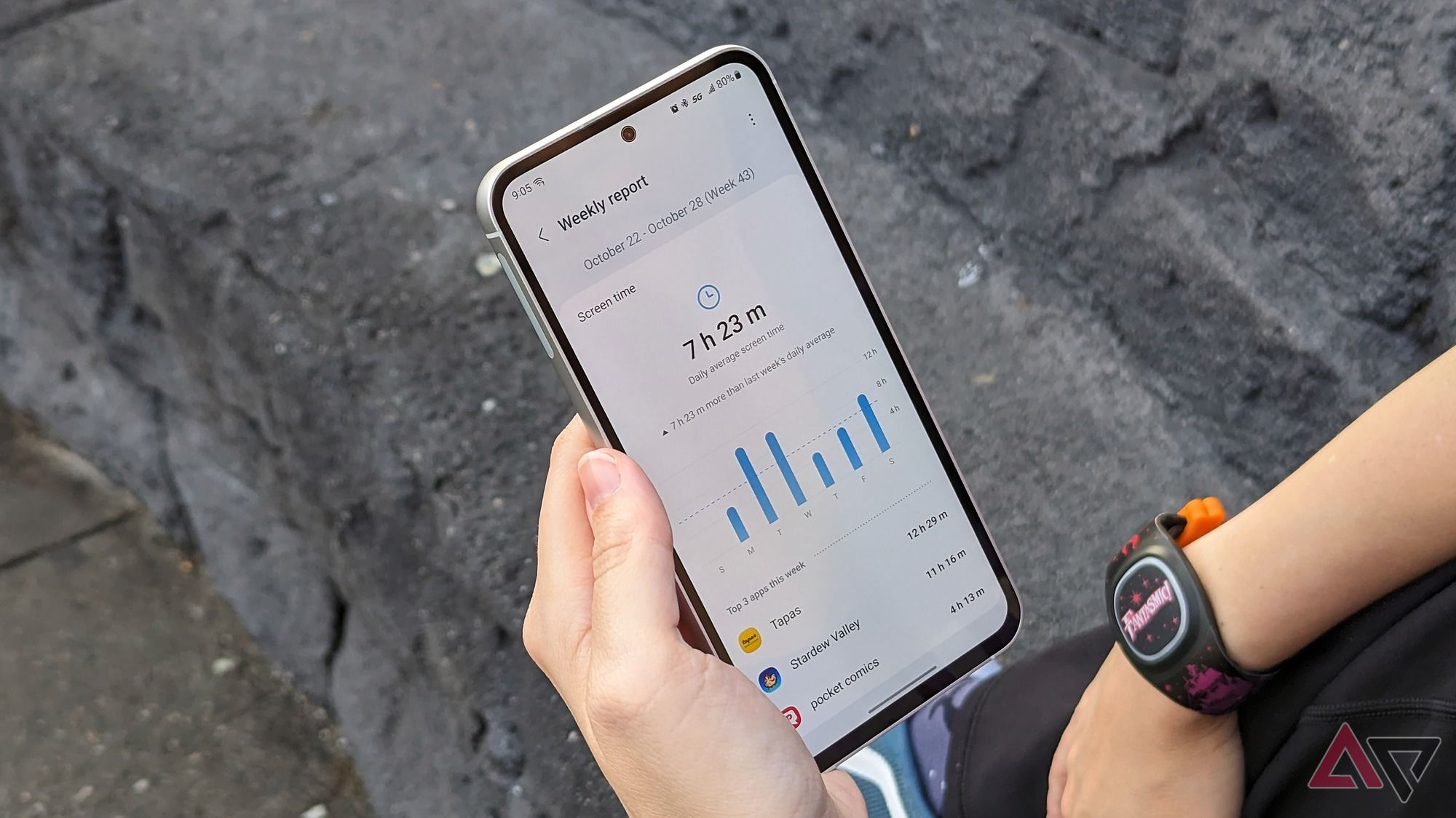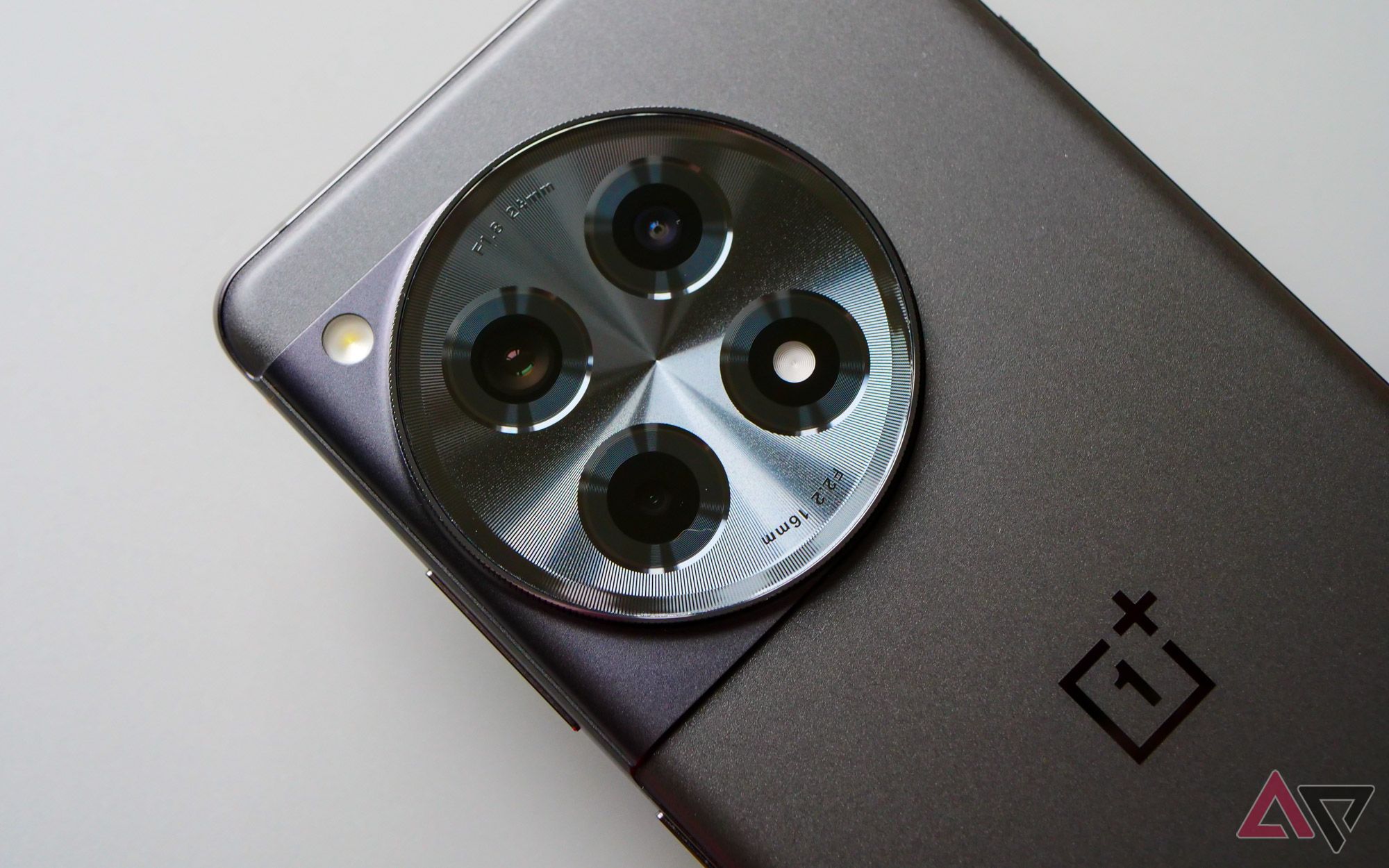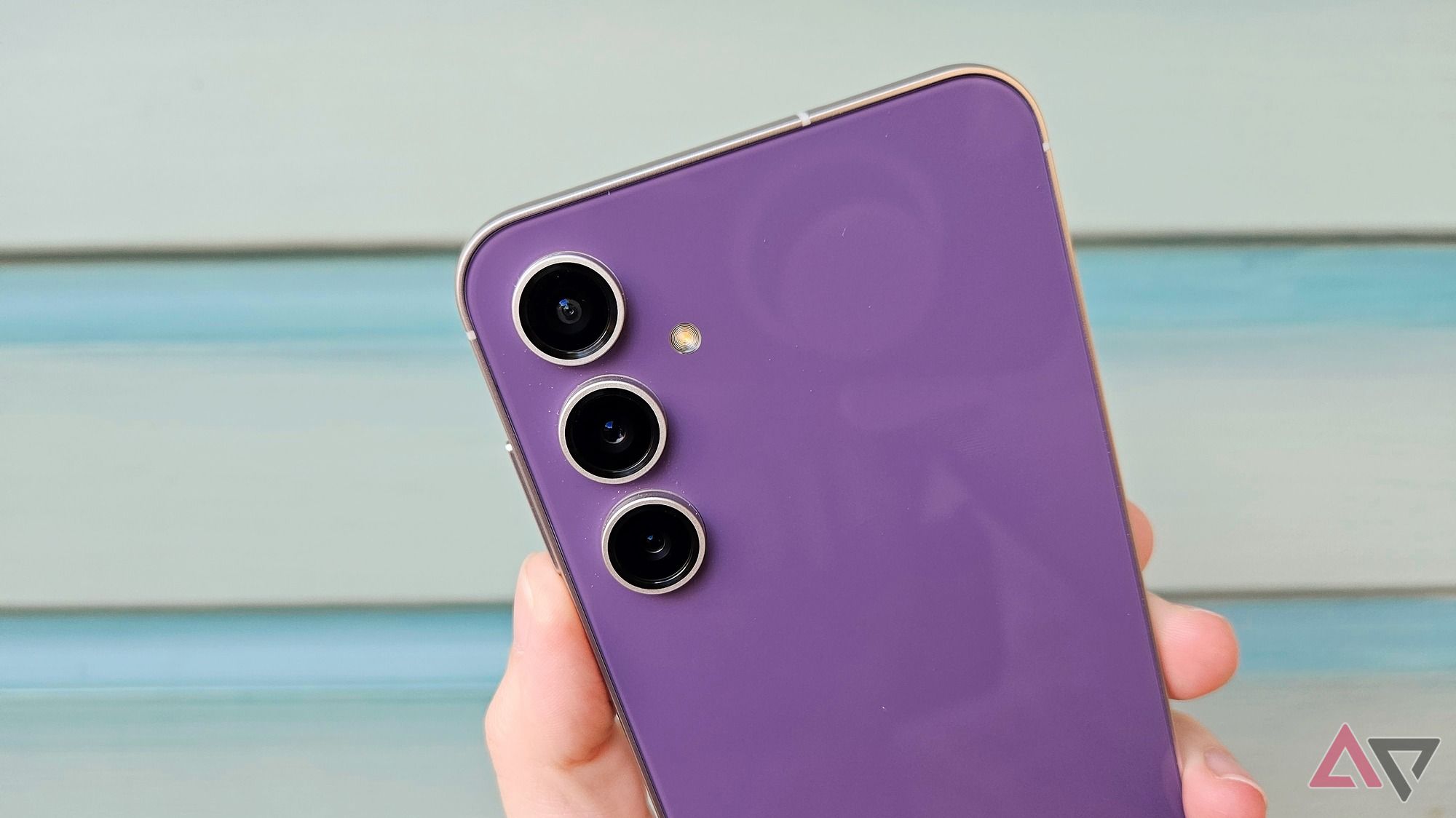-
OnePlus 12R
A midrange champThe OnePlus 12R is the more affordable sibling to the company’s flagship OnePlus 12, but it cuts surprisingly few corners to reach its $500 price tag. It delivers a near-flagship experience in a midrange phone with incredible battery life and top-notch performance.
Pros- Excellent performance
- Outstanding multi-day battery life and fast charging
- A gorgeous display
Cons- OxygenOS is still a bit polarizing
- Middling cameras
- Only IP64-rated
-
Samsung Galaxy S23 FE
The affordable S-series$550 $600 Save $50The Galaxy S23 FE is Samsung’s 2023 “Fan Edition” smartphone, scaling back on what the more premium S23 offers at a lower price. It delivers solid battery life and performance and an impressive screen, but its 2022-era specs are already starting to show their age alongside Samsung’s S24 lineup.
Pros- Bold and bright display
- Solid performance
- Full-day battery life
Cons- Lackluster cameras with sub-par telephoto lens
- Older Snapdragon chip can heat up a bit under load
- Slower charging
There’s never been a better time to consider buying an affordable smartphone. As technology improves, more powerful midrange chips have blurred the lines between budget phones and flagships in a way that would have been unthinkable only a few short years ago.
We needn’t look much further than the new OnePlus 12R and Samsung’s Galaxy S23 FE for two phones that can deliver all the performance and features most smartphone users need at a substantially lower price than their flashier siblings. Although both models have cut a few small corners to reach these more affordable prices, you may be surprised at how little you’re giving up for the money you’ll be saving. The OnePlus 12R and Samsung Galaxy S23 FE deliver great value in different ways, but which one is right for you? Let’s find out.
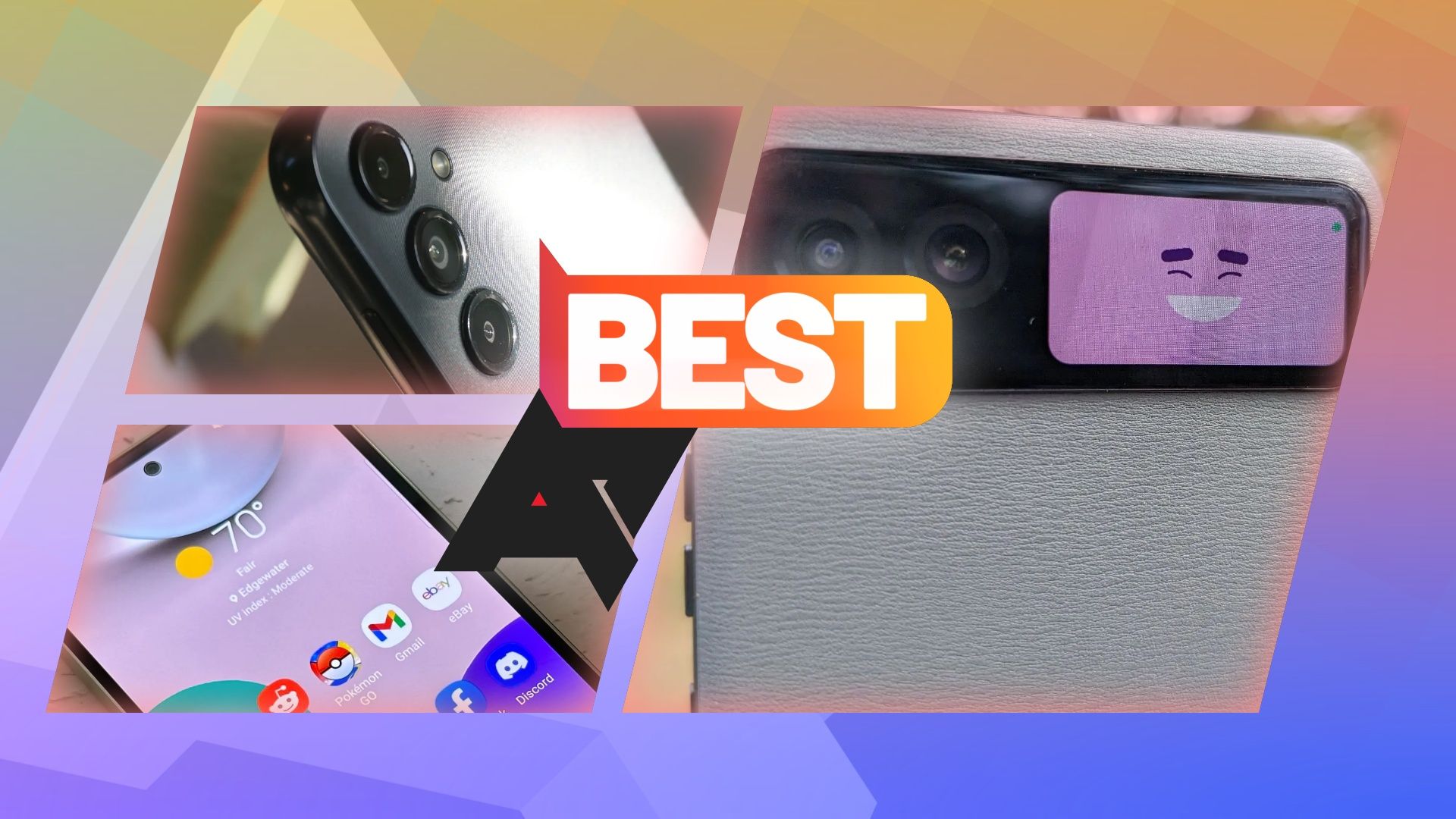
Best budget Android phones in 2024
These days, you don’t have to pay through the nose to get a decent phone
Price, availability, and specs
As with the rest of the OnePlus lineup, the biggest challenge with the OnePlus 12R is that you won’t likely find it in your local carrier store, which means you’ll be purchasing it at full price. The good news is that it should work fine on any U.S. carrier, and it’s widely available through the usual retail channels, including Amazon, Best Buy, and the OnePlus store, where it starts at $500 for the base model.
That entry-level option is available only in Iron Gray with 8GB RAM and 128GB of storage, while an extra $100 will get you a 16GB/256GB configuration and the Cool Blue option. Those purchasing directly from OnePlus can also take advantage of some nice trade-in offers to bring the price down by $100.
You’ll have an easier time finding Samsung’s Galaxy S23 FE, which is available from all the same retailers and also more carriers. The starting price of the 128GB model is $600 at Amazon and Best Buy, with the 256GB model going for $60 more. However, for whatever odd reason, Samsung has tacked $30 onto the selling price for the unlocked models from its own website, which is where you’ll need to turn if you want the exclusive Tangerine or Indigo colors. Otherwise, you can still choose from Graphite, Purple, Cream, and Mint.
-
OnePlus 12R
- SoC
- Qualcomm Snapdragon 8 Gen 2
- Display type
- LTPO AMOLED, 120Hz
- Display dimensions
- 6.78″, 19.5:9
- Display resolution
- 2780 × 1264
- RAM
- 8GB or 16GB LPDDR5X
- Storage
- 128GB or 256GB
- Battery
- 5,500mAh
- Charge speed
- 80W wired (100W international)
- Charge options
- USB-C SuperVOOC wired
- Ports
- USB-C 2.0
- SIM support
- Dual Nano-SIM
- Operating System
- Android 14 with OxygenOS 14
- Front camera
- 16MP
- Rear camera
- 50MP, f/1.8 main; 8MP, f/2.2 ultrawide; 2MP, f/2.4 macro
- Cellular connectivity
- Sub-6 5G, LTE
- Wi-Fi connectivity
- Wi-Fi 7
- Connectivity
- NFC
- Bluetooth
- Bluetooth 5.3
- Dimensions
- 163.3 x 75.3 x 8.8mm
- Weight
- 207g
- IP Rating
- IP54
- Colors
- Cool Blue, Iron Gray
Samsung Galaxy S23 FE
- SoC
- Qualcomm Snapdragon 8 Gen 1 (US), Exynos 2200 (worldwide)
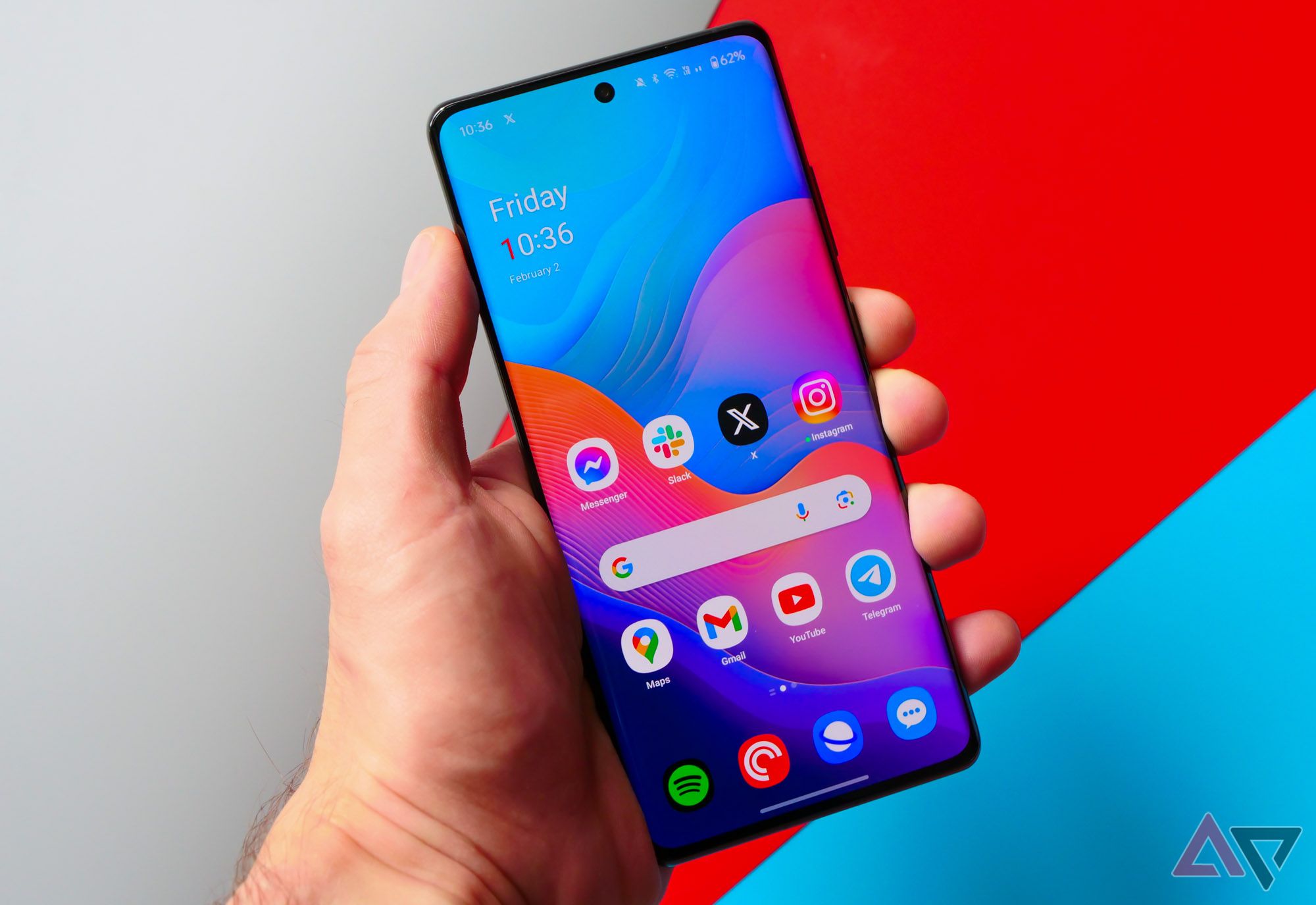
OnePlus 12R review: A real flagship killer for $500
A phone that packs all the power you need for the price you want to pay
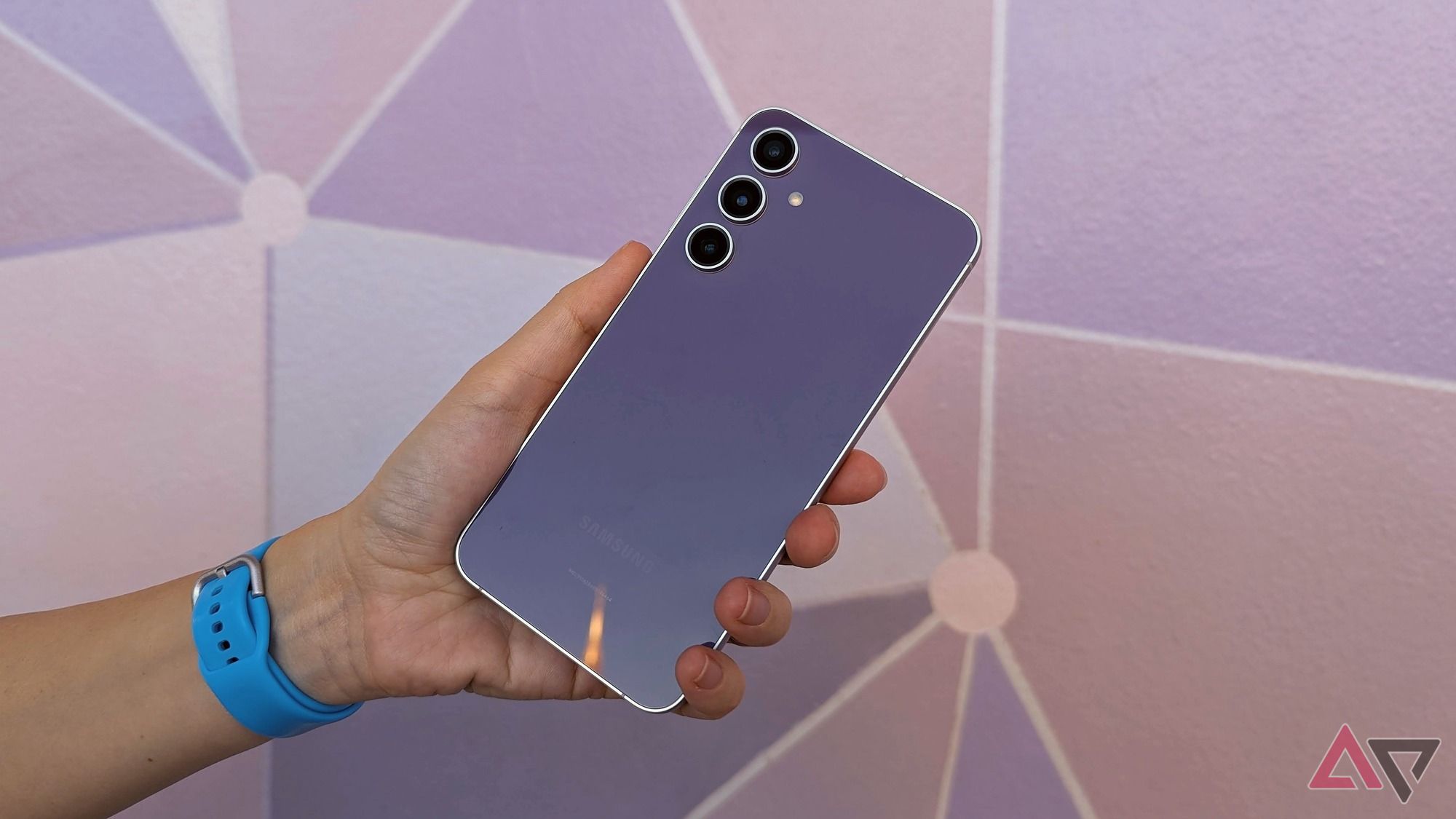
Samsung Galaxy S23 FE review: A not-quite diamond in the rough
Don’t let this phone get lost in the mid-range crowd
Design
Flagship elegance
Both the OnePlus 12R and Samsung Galaxy S23 FE adopt design languages so similar to their respective premium counterparts that you’ll have a hard time telling them apart from the more expensive models at first glance.
The OnePlus 12R sticks with the bold circular camera module the smartphone maker introduced on the OnePlus 11, adding many of the same design touches that came to the OnePlus 12 earlier this year, including a watch-like metal ring and a finish that matches the color of the rest of the phone. The most noticeable difference here is the lack of the stylized “H” to represent the company’s Hasselblad partnership since the camera system on the OnePlus 12R lacks that finer color tuning. More on that later.
The OnePlus 12R is also available in different finishes, trading in the Flowy Emerald of the OnePlus 12 for a glossy Cool Blue instead and the Silky Black for an Iron Gray that’s slightly lighter but still matte. However, the OnePlus 12R has one fun design trick with the Genshin Impact edition — a level of whimsy we rarely see from Samsung.
The Galaxy S23 FE similarly retains the aesthetic that Samsung introduced in the original Galaxy S23 lineup earlier last year. Three lenses protrude from a flat and otherwise unadorned back, although the S23 FE model stands out with its much glossier finish. It’s also available in a much wider color range.
Beyond design, size is the other significant difference between the two models. The OnePlus 12R is every bit the plus-sized phablet of its premium sibling, with a 6.8-inch screen that overshadows the 6.4-inch Galaxy S23 FE. However, the thinner bezels on the OnePlus 12R mean that the actual size difference between the two phones isn’t quite as dramatic as you might expect from the screen dimensions. The OnePlus 12R is only about 5mm taller than the Galaxy S23 FE, and it’s actually just under a millimeter less in width. The rounded edges on the OnePlus 12R also help it feel smaller in hand compared to the more brick-like Galaxy S23 FE with its flat sides.
The OnePlus 12R uses Gorilla Glass Victus 2 on the front screen, which should make it more scratch-resistant and less prone to shattering from drops than the Galaxy S23 FE’s Gorilla Glass 5. However, Samsung comes out ahead in dust and water resistance with its typical IP68 rating that lets the S23 FE handle immersion in up to 1.5 meters of water for up to 30 minutes. OnePlus has never been great at providing the best water resistance, and the OnePlus 12R is no exception with its IP64 rating, which is enough to protect it from a rainy day, but not much else.
Display
Starkly different
As we noted earlier, the OnePlus 12R has a larger display, coming in at 6.78 inches compared to 6.42 inches on the Galaxy S23 FE.
While the resolution specs are lower on paper, OnePlus’ R model doesn’t have any noticeable compromises compared to its more expensive counterpart. You get the same eyeball-searing 4,500 nits of peak brightness, which is likely more than any sane person will ever need, with 1,600 nits during regular everyday use in high brightness mode. The Galaxy S23 FE peaks at only 1,450 nits, but we never had difficulty seeing it, even on bright, sunny days.
The OnePlus 12R’s AMOLED LTPO screen has a resolution of 2780 x 1264 pixels, which works out to 450 pixels per inch (ppi). It also shares the OnePlus 12’s unique 2,160Hz pulse width modulation (PWM) dimming, which makes it far easier on folks who are sensitive to flickering on OLED screens. That’s an order of magnitude higher than the 240Hz PWM that the Galaxy S23 FE offers.
Although the Galaxy S23 FE delivers a lower 2340 x 1080-pixel resolution, that’s not too bad for the smaller screen, leaving it with a pixel density of 404 ppi. Both phones offer the typical adaptive 120Hz refresh rate found on most modern smartphones; however, the S23 FE doesn’t use an LTPO display, so it only goes as low as 60Hz, while the OnePlus 12R can get all the way down to 1Hz.
Specs aside, the two phones have very polarizing differences in their display designs. The OnePlus 12R has narrow bezels with the kind of curved screen edges that were all the rage a few years ago, while the Galaxy S23 FE goes for an entirely flat panel with rounded corners and a very pronounced bezel. Which is better is a matter of personal taste, but it’s hard to imagine two styles that could be more different.
In practical terms, the Galaxy S23 FE has a competent display that we don’t think anyone will be disappointed with, but the OnePlus 12R runs circles around it. We found it every bit as crisp and vibrant as screens used on significantly more expensive phones.
Software
Pick your favorite Android flavor
Staying true to form, the OnePlus 12R ships with the company’s OxygenOS layered on top of Android 14, but the good news is that the skin has become less in-your-face than it once was. Putting aside OnePlus’ over-the-top marketing, we found that OxygenOS more comfortably fades into the background once you get used to it, and you can even tweak it to feel a bit closer to a proper Android experience.
Nevertheless, the OnePlus 12R remains far from a pure Android Material You design, and OxygenOS remains a niche operating system layer that seems loved by many but merely tolerated by most. That’s not to say that Samsung’s One UI, which sits on top of Android 14 on the Galaxy S23 FE, is any closer to its Android roots, but at least it’s more mainstream and probably all most Samsung fans have ever known.
Depending on your take on generative AI, the OnePlus 12R could be a breath of fresh air from the current craze of adding AI-powered features to the latest phones. We were pleasantly surprised to find OxygenOS comfortably devoid of “AI-laden gimmicks.”
The Galaxy S23 FE shipped in the same manner last fall, but Samsung has since started rolling out One UI 6.1 to the S23 lineup with its Galaxy AI tools on board. These let you do things like translate conversations, summarize your notes, and fill in backgrounds in photos and missing frames in videos to create slow-motion clips. There’s some debate right now on where these features fall on the line between “useful” and “gimmick,” and it’s important to note that the S23 FE’s older chip leaves it out of some of them anyway.
Even though Samsung promises the Galaxy S23 FE will get one more year of updates than the OnePlus 12R, both phones may end up equally left behind on Android 17 when Android 18 comes along in a few years.
That’s because Samsung may have cheated us out of an update by releasing the Galaxy S23 FE with Android 13 last fall, even as Google was pushing Android 14 out to its Pixel phones. Hence, Galaxy S23 FE users have already received the first of its four promised updates, which technically leaves Android 17 as the end of the road. However, the issue is a bit murkier as the S23 FE more recently launched in Europe with Android 14 installed out of the box, and European Union consumer protection laws could force Samsung to provide an Android 18 update, at least in the EU.
Performance
Two solid workhorses
OnePlus has never shied away from putting top-notch chips in its smartphones, and the OnePlus 12R is no exception. It packs last year’s flagship Qualcomm Snapdragon 8 Gen 2 chip, which powered the OnePlus 11 and is more or less the same chip found in Samsung’s entire S23 lineup.
While this year’s flagships have naturally moved on to the Snapdragon 8 Gen 3, that older chip is no slouch. The OnePlus 12R delivers excellent performance for pretty much everything you can imagine doing while also delivering solid power efficiency. The OnePlus 12R handled everything we threw at it with aplomb, but that wasn’t a real surprise, as the Snapdragon 8 Gen 2 is a proven workhorse.
However, since the Galaxy S23 FE is effectively the baby brother to the early 2023 Galaxy S23 lineup, it uses a chip that’s a year behind those flagships, the Snapdragon 8 Gen 1, at least for the North American model (international versions use the Exynos 2200). That’s a very capable chip for everyday applications and casual gaming, but it’s not as power-efficient and tends to heat up if you throw more demanding apps and games at it. We found it fared better than it did in the Galaxy S22 series, so Samsung clearly improved something in the S23 FE, but it’s still not the cool performer the OnePlus 12R is.
That older chip will also prevent you from using some of the best Galaxy AI features, as those were designed to take advantage of AI optimizations in Qualcomm’s latest Snapdragon 8 Gen 3. It’s not even clear how well these will play out on the Gen 2-equipped S23 models, but expecting the Gen 1 to keep up is likely asking too much.
Battery life
No comparison
The OnePlus 12R continues the company’s trend of delivering unbelievable battery life. The 5,500mAh cell easily delivers two days of use for most folks. In our testing, we found that even the heaviest users should get a day and a half without any trouble, and you could probably push it to three with light use.
By comparison, the Galaxy S23 FE will still get you through a typical day without any trouble. The 4,500mAh cell gave us 6 to 8 hours of screen-on time with average brightness, dropping to around 4.5 hours on days we did more serious shutter-bugging. You’ll probably need to hit a charger every night, but on less active days, we had 20% remaining by bedtime.
When it comes time to charge either phone, the OnePlus 12R also comes out ahead with the company’s usual ultrafast charging speeds. The 80W SuperVOOC charger in the box will top up the phone to full in about 30 minutes, and that gets even more impressive when you consider that we were able to go from 19 percent to 33 percent in only 180 seconds. The 90-minute-plus 25W charging on Samsung’s Galaxy S23 FE pales in comparison to that.
So, not only will you need to charge the OnePlus 12R less often, but you won’t need to keep it plugged in nearly as long. There’s no wireless charging here — the Galaxy S23 FE comes out ahead in that area with the usual 15W Qi support — but that’s less of an issue for the OnePlus 12R; as we said in our review, “when you’re barely thinking about a charger to begin with, Qi pads start to feel a little meaningless anyway.”
Camera
Manage your expectations
While the OnePlus 12R and Galaxy S23 FE have capable cameras, one thing must be made clear from the outset: you shouldn’t be buying either of these phones for their photographic prowess. If taking great photos is essential, there are far better options, even in this price range.
In an era of processors and displays that have long since reached the point of diminishing returns, it’s the cameras that now set the ultra-premium flagships apart from the rest of the pack. The OnePlus 12R is the runner-up to the OnePlus 12, and the Galaxy S23 FE is the runt of the S23 litter, so it’s important to manage your expectations accordingly.
With that in mind, these aren’t bad cameras. In fact, they’re quite capable for folks who just want to take casual snapshots to share on social media. We found both cameras to be Instagram-worthy but not much else.
The Galaxy S23 FE uses the same 50MP f/1.8 main sensor as the S23, but we found the FE model showed off the worst of Samsung’s image processing problems. It produced photos that felt like “too much” in almost every way: overbrightened, oversaturated, and oversharpened. Night and other low-light photography was also hit-and-miss.
The OnePlus 12R lacks the 3x telephoto sensor of the Galaxy S23 FE, but that’s not a huge loss as we found that lens next to useless on Samsung’s phone. The OnePlus 12R main camera has the same specs and performs about as well, producing photos that are acceptable but also bland enough to leave us missing the Hasselblad tuning of its pricier sibling. The OnePlus 12R handled moving subjects better than many other phones we’ve tested, but lens flares seemed to be a bigger problem, and the low-light shots it took were nothing to write home about.
Which one is right for you?
The OnePlus 12R handily beats out the Samsung Galaxy S23 FE, but that’s not just because it’s a newer phone. OnePlus has done so many things right with its midrange phone that it’s become a flagship killer and one of this year’s budget phones to beat. It falls down in camera quality against other options in its price range, like the Google Pixel 7a, but it also feels like a deliberate choice on the company’s part not to compete in that area.
In every other way, OnePlus has cut the right corners to produce a $500 smartphone that feels like a premium pick. The Snapdragon 8 Gen 2 offers incredible performance that’s fully on par with last year’s top flagships, along with outstanding battery life and charging speeds without compromising in any meaningful way on design or display quality. In fact, we’d say OnePlus has set a new bar here for budget phones.
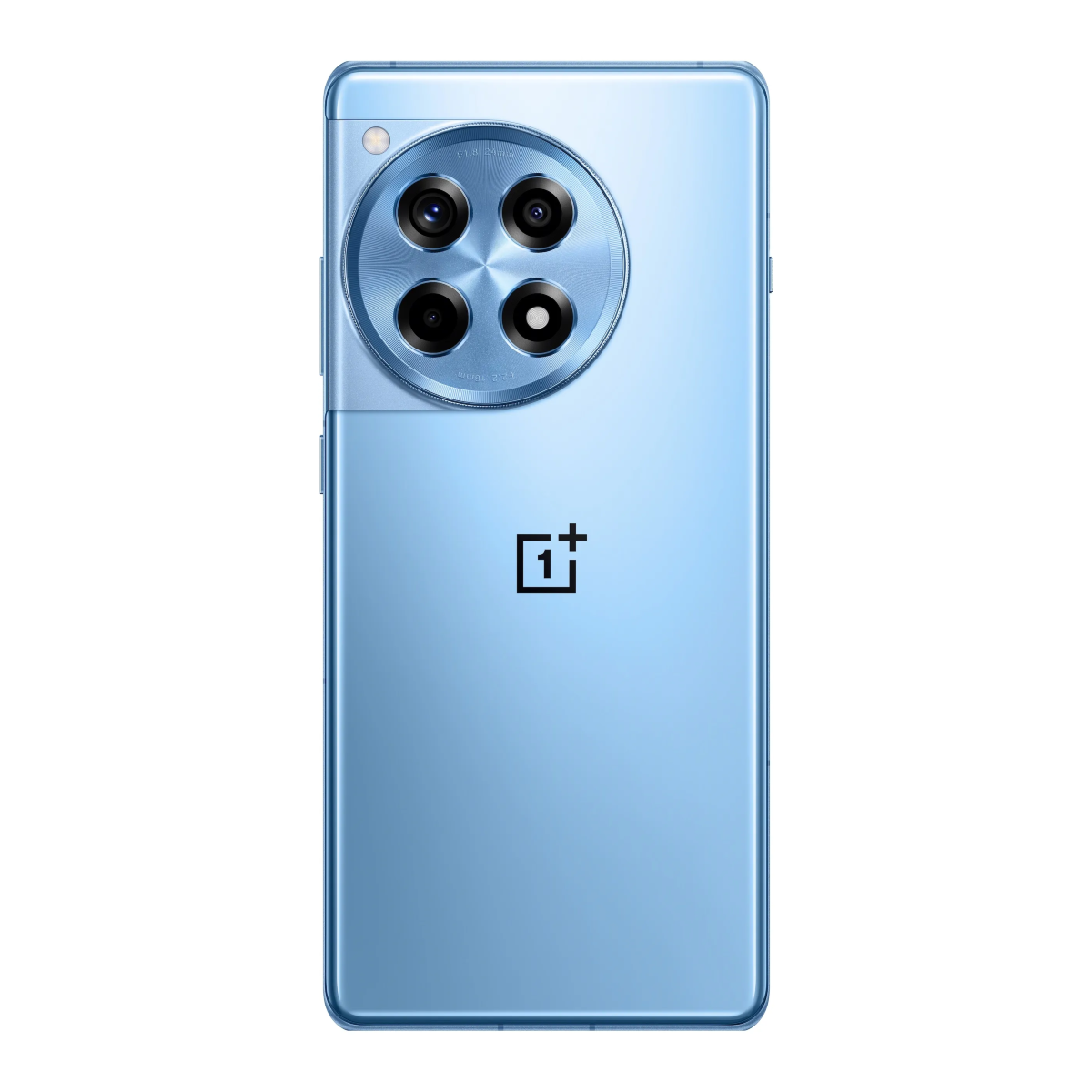
OnePlus 12R
Great all-around phone
The OnePlus 12R sets a new bar for what a midrange smartphone should offer. It hits all the right notes for its price, with a powerful processor, stellar battery life, an impressive screen, and an elegant design, making it this year’s flagship killer.
The Galaxy S23 FE isn’t an especially bad pick, particularly for Samsung fans, but with a sticker price that’s $100 higher and a capable but aging Snapdragon chip, it’s very hard to recommend against what the OnePlus 12R offers. After all, even though the Galaxy S23 FE only came out last fall, it was a second-tier phone by the standard of the early 2023 S23 lineup. That puts it at least a year behind the OnePlus 12R. It’s a tough sell at $600, but it could be worth considering if you can find a good deal.
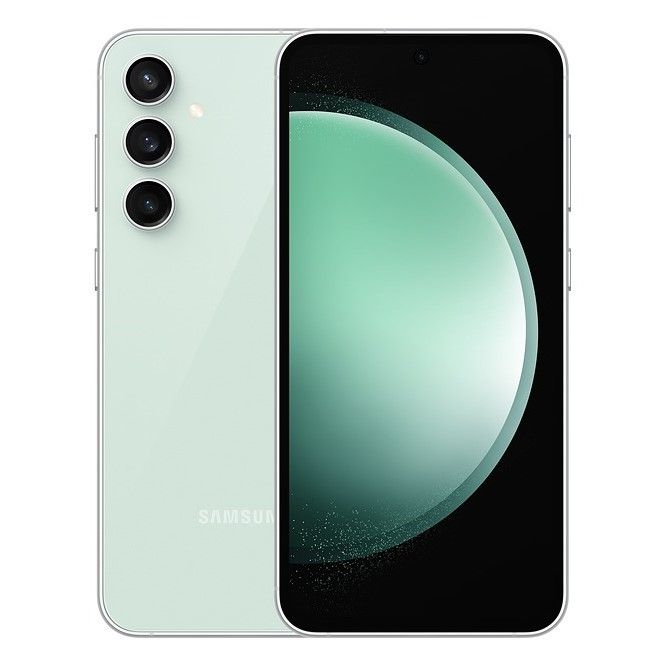
Samsung Galaxy S23 FE
Capable phone that falls behind
Samsung’s midrange Galaxy S23 FE is a decent phone for Samsung fans on a budget, but with mostly 2022-era specs, it’s already starting to show its age against other contenders, including the rest of its S23 siblings.





